12 of the Best Day Trips From Rome
Roam away from Rome with these day trips to beaches, hill towns, and famous archaeological sites.
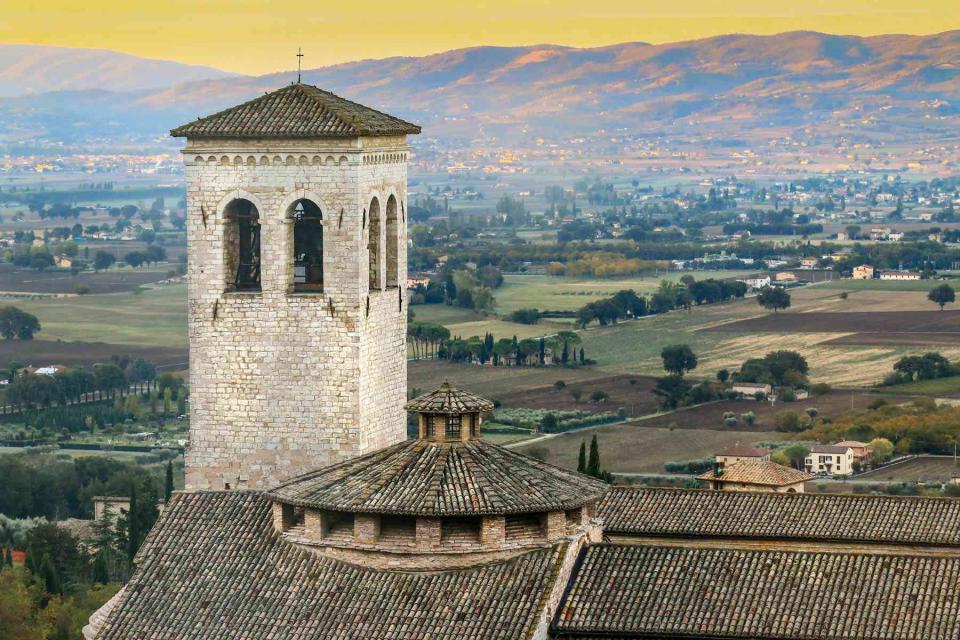
Philip Parish/Eye Em/Getty Images
It can take a lifetime to thoroughly see Rome, with all its archaeological sites, historic landmarks, and ruins. If you’re interested in breaking up your time in the Eternal City with a day trip or two, you’re in luck: Rome is within easy reach of an array of day trip destinations, including major archaeological landmarks, charming hill towns, and pleasant seasides.
Below are the best day trips from Rome — most of which are conveniently accessible by public transport. While many of these destinations can be longer trips, they’re still worthy journeys to make when you want to step away from crowds of Italy’s biggest city.
Pompeii
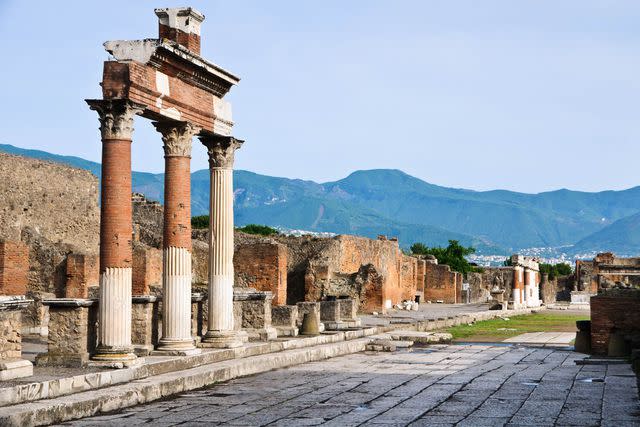
KenWiedemann/Getty Images
Full disclosure: A day trip to Pompeii will barely allow you to scratch the surface of this vast and fascinating archaeological site, where ash from the 79 C.E. eruption of Mount Vesuvius sealed the city in a 2,000-year-old time capsule. But you can cover a lot of ground in a day if you get an early start. Take a morning high-speed train (either Trenitalia or Italo) to Naples’ Central station, then the Circumvesuviana regional line to the Pompei Scavi stop. Allow at least four to five hours to walk around the ruins. There’s also a daily shuttle bus from central Rome straight to the ruins.
Tivoli

Diego Fiore/Getty Images
A vacation destination since the days of the Roman Empire, Tivoli is about an hour east of Rome. It’s the site of Hadrian’s Villa (Villa Adriana), the splendid ruins of the pleasure palace inspired by Roman emperor Hadrian’s far-flung travels. Tivoli is also home to 16th-century Villa d’Este and its magnificent gardens filled with fountains (including a musical one), waterfalls, streams, and other engineering wonders. Since Villa d’Este is within walking distance of the train station, we recommend seeing Hadrian’s Villa in the morning, grabbing the bus back into town for lunch, and then touring Villa d’Este before taking an evening train back to Rome.
Orvieto
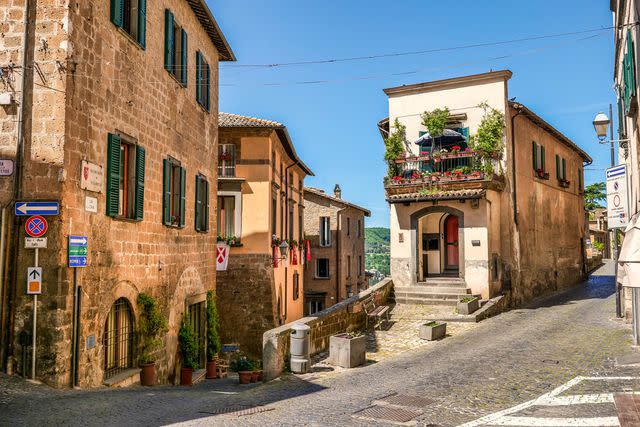
Photo Beto/Getty Images
To experience a slice of medieval Italy, catch a train to Orvieto, an Umbrian hill town about 1.5 hours north of Rome. A quick funicular ride from the train station takes you to the top of the tufa cliffs, which was first settled by the Etruscans, then destroyed by the Romans, and later rebuilt in the 12th century. Spend a pleasant day admiring its magnificent duomo, wandering its narrow streets, exploring its underground remains, and enjoying Orvieto Classico (the region’s white wine) and some hearty local cuisine. There’s plenty here to keep you for a night or two, if you have the time
Ostia

Fabianodp/Getty Images
If you don’t have the time to schlep to Pompeii, don’t overlook Ostia Antica, an archeological site located roughly an hour from central Rome via commuter train. Though it didn’t have the same dramatic climax as Pompeii, Ostia was once the main port city of Rome and now offers a similar step back into a well-preserved Roman city. Highlights include a theater, multistory apartment buildings, and a bathhouse, and a latrine. There’s also the fascinating Piazzale delle Corporazioni, a former open-air market where the inscriptions on the mosaic floors indicate the merchants that once inhabited the space. Trains to Ostia depart from Rome’s Ostiense train station.
Florence
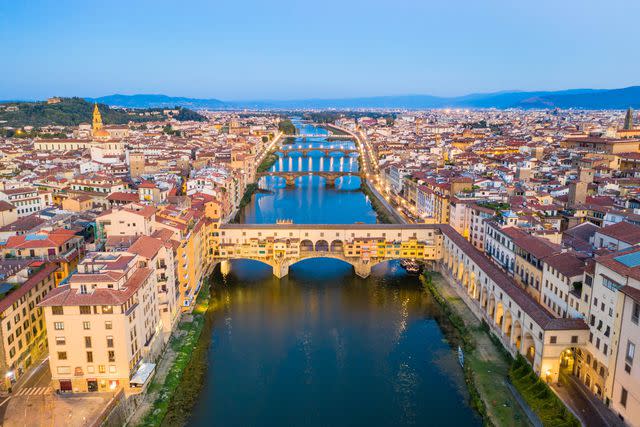
Ian.CuiYi/Getty Images
While a day or two is not enough to see Florence, an early start and a high-speed train to Santa Maria Novella station can get you to the cradle of the Italian Renaissance in less than two hours. It’ll leave you with a full day to explore and still be back in Rome by evening. Florence’s historic center is compact and walkable, making it possible to take in most of its major attractions in a few hours. This includes the Piazza del Duomo and Piazza della Signoria, the bustling San Lorenzo Market, and the iconic Ponte Vecchio bridge. Reserve timed entry in advance if you want to visit the Uffizi Gallery or see Michelangelo’s "David" in the Galleria dell'Accademia di Firenze.
Naples

Maurizio Siani/Getty Images
Fast trains from Rome will get you to Napoli Centrale, the city’s main station, in just over an hour. We suggest spending the morning along the Spaccanapoli, a narrow street that cuts through the historical part of town. Be sure to take detours into its side streets, duck into churches, visit the Naples National Archaeological Museum, and sample the street food, including pastries and delicious fried pizza. In the afternoon, head to the seaside via taxi or subway — Naples' elaborately designed Metro stations are not to be missed — and spend a few hours strolling the waterfront, visiting the Castel dell'Ovo, and having a sunset aperitivo or dinner before catching a train back to Rome.
Caserta
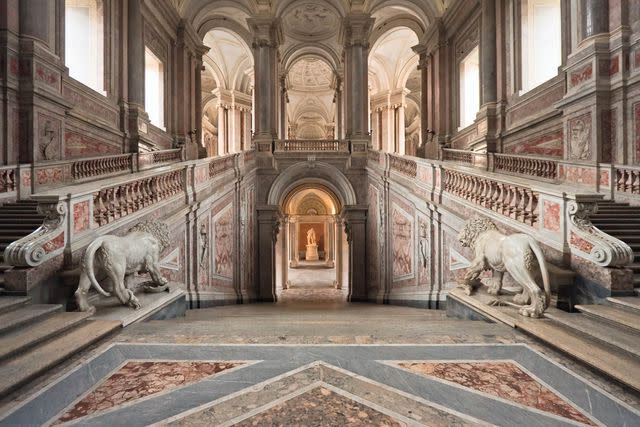
rusm/Getty Images
If you’re interested in the complicated history of southern Italy, or you simply want to immerse yourself in Baroque architecture, the Royal Palace of Caserta is a long (but doable) day trip from Rome. The 18th-century palace, now a UNESCO World Heritage Site, was the largest palace in Europe — even bigger than Versailles, on which it was modeled. The grand interiors vie for attention with the spectacular gardens, which include a two-mile canal, cascades, fountains, and a dreamy English garden. The palace entrance is just across the train station, which is approximately an hour ride from Rome.
Assisi

Peter Zelei Images/Getty Images
With a couple of direct trains to and from Rome each day, Assisi can be reached in a little more than two hours. While this majestic city is a pilgrimage destination, it's equally fascinating for anyone curious to learn more about the life of St. Francis and the history of the Franciscan order. (St. Francis is known for helping the poor and underprivileged, caring for animals, and founding the Franciscan order.) The basilica that houses his tomb, as well as frescoes by Italian painters Giotto and Cimabue, is a must-visit. Other worthy spots to check out: the Basilica di Santa Chiara, a Roman temple in the heart of the old town, and an ancient forum several feet underground. Assisi’s narrow streets are filled with cute shops, wine bars, and traditional trattorias.
Castelli Romani

pavel068/Getty Images
A short distance from Rome, the hill towns of the Castelli Romani region were the summer retreat for wealthy Roman nobles and, later, for even wealthier popes. Today, it’s a popular destination for sampling local food and wines. For those without a rental car, the two best options are Frascati and Castel Gandolfo — both towns are less than an hour away by train. At Frascati, you can visit the art-filled villas of the faded Roman aristocracy and enjoy glasses (or bottles!) of wine with lunch in one of its characteristic fraschette, or taverns. In Castel Gandolfo, visit the pope's summer palace and gardens, take in views of Lake Albano, or arrange for a tour and tasting at a nearby winery.
Santa Marinella
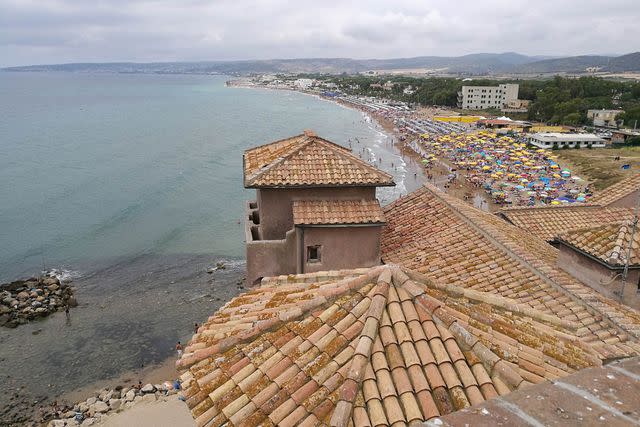
Florence Leandri / EyeEm / Getty Images
If the sea calls to you, Santa Marinella is one of the best places to spend a beach day close to the city. About an hour from Rome by train, it’s not quite as convenient as other popular spots like Ostia’s waterfront or Fregenae, but the beaches are better and there are some nice spots for outdoor dining in the small town. If you spring for a lounge chair and umbrella at a stabilimenti (private beach), you’ll likely have access to a bathroom, showers, and a locker. Or, seek out a sandy spot on the spiaggia libera (free beach) — just expect to have lots of company on the weekends.
Sperlonga

travelview/Getty Images
Sperlonga is a bit of a haul from Rome, but it's worth it for its Blue Flag beach — a designation of cleanliness and water quality — and the picturesque town itself. To get there, take the roughly 90-minute train from the Roma Termini station to the Fondi Sperlonga stop, then grab a shuttle bus or taxi down to the seaside. There are several beaches along the 3.5-mile seafront, and most have clear, shallow water and excellent swimming conditions. A free beach area near the Villa di Tiberio offers a good excuse to explore the seaside retreat of first-century Roman emperor Tiberius.
Cerveteri
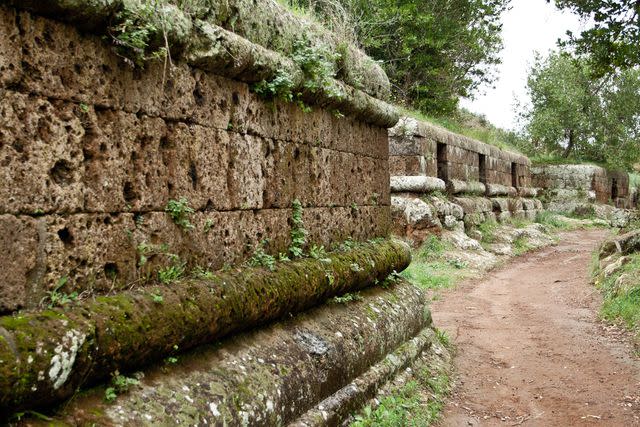
MicheleAlfieri/Getty Images
This is the only destination on our list that isn’t convenient for train travelers, but Cerveteri makes the cut for its Etruscan cemetery, the Necropoli della Banditaccia. This so-called "city of the dead" — laid out in a pattern similar to city blocks — is largely filled with above-ground dome- or square-shaped tombs, many of which contain several rooms. As one of the most important archaeological sites in the Etruscan realm, the necropolis has yielded a trove of artifacts and information about these enigmatic predecessors to the Romans. To get there without a car, you'll need to take the train to Rome’s Cornelia station, then grab a bus to Piazza Aldo Moro in Cerveteri, and finally walk or cab a little over a mile to the site.
For more Travel & Leisure news, make sure to sign up for our newsletter!
Read the original article on Travel & Leisure.

